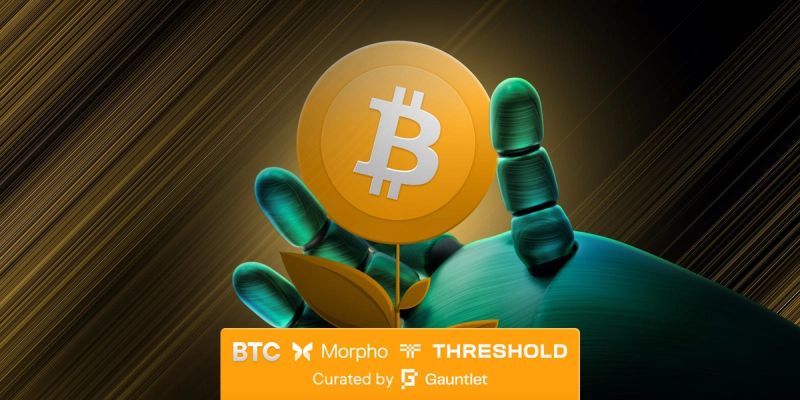The beginning
In the early days of the SwissBorg Earn program, we launched a BTC Smart Yield strategy, which was met with considerable success. Legend has it that following the launch, users subscribed such a massive amount that we gradually drained the overall BTC rate you could get in DeFi.
Initially, the strategy was spread across a variety of protocols, but we quickly ended up yielding primarily on Aave, Alpaca, and Venus. Over time, the rates became much lower, and we grew increasingly concerned about the centralisation risk associated with BTCB, especially after the events surrounding FTX. Let’s dive a bit deeper into this risk.
Centralisation 1.0
Early BTC-wrapped tokens include wBTC and BTCB, the former issued by BitGo and the latter by Binance. Both tokens are still in use and remain the two largest BTC-wrapped tokens, with market caps of $13.6 billion and $6.9 billion, respectively.
Both solutions now have a Proof of Reserves. Binance publishes monthly reports, though BTCB is not explicitly mentioned. They also provide a DefiLlama adapter with the wallet address holding all the BTC, allowing verification that BTCB supply is always equal to or less than the escrowed BTC. Minting and burning of BTCB are managed by Binance, but BTCB can be accessed on a 1:1 basis by any KYCed Binance user when withdrawing BTC to Binance Chain or depositing BTCB on Binance.
For wBTC, Bitgo offers proof of assets on their website, listing the custodied BTC alongside the addresses where the BTC are held. However, this proof relies on self-reported attestations, which require trusting a centralised entity to accurately disclose and maintain custody information. Minting and burning are restricted to selected KYCed merchants and incur a fee.
By holding either asset, SwissBorg would be exposed to the inherent risks associated with their issuers. While Binance is now the largest company in crypto, any issue affecting them could have dramatic consequences for the markets as a whole, including BTCB. For Bitgo, the limited access to the primary market and associated fees rendered a potential strategy unappealing in terms of yield. Additionally, the recent involvement of Justin Sun undermined the project's credibility, ultimately convincing us not to use wBTC. Since this announcement, the WBTC supply has dropped 16.4%.
Centralisation 2.0
As Binance’s BTCB primarily operates on BNB Chain and BitGo faced criticism following Justin Sun’s involvement, new players saw an opportunity to step into the space.
Let’s take a closer look at Coinbase and Kraken’s newly created wrapped tokens and see how they are, in many ways, similar to the others.
Coinbase was quick to introduce their version of BTC: cbBTC. Leveraging their blockchain, Base, they integrated cbBTC with major partners on their chain before expanding to other chains like Solana. To access the primary market for cbBTC, users must have an account in "good standing" and reside in a supported jurisdiction. The major issue, however, is the lack of proof of reserves. This means there’s no verified backing of cbBTC, and its value relies entirely on the trust that users have in Coinbase’s custody of the BTC backing the token. To us, this is a major red flag.
So why do we see growth on cbBTC? Coinbase is simply spending enormous amounts of money on incentives. The PYUSD launch on Solana reminded us that such a program inflates metrics in the short term but it is not sustainable in the longer term. The DeFi mercenary liquidity always chases the new opportunity.
Kraken followed suit by introducing their own wrapped token, kBTC. Similar to Binance, any KYCed user can deposit BTC on Kraken to receive kBTC, and vice versa. Kraken took it a step further than Coinbase by disclosing proof of reserves, adding a layer of transparency. While this solution is a notable improvement over Coinbase’s, it still doesn’t resolve the centralisation risk. Kraken set up a special-purpose depository institution (SPDI) obligated to hold all collateral in a wallet without using it, but the mint and burn process is controlled by another Kraken entity, which still retains power over who can access the primary market.
As we can see, Coinbase’s solution fails to improve the situation, while Kraken has made commendable efforts toward transparency but remains constrained by the inherent centralisation of their business model.
Decentralisation
Since the options presented above are not a viable option for SwissBorg, we decided to explore other alternatives such as Threshold and Lombard.
Threshold is one of the leading decentralised tokenised BTC solutions, having started operations back in 2020, after several years of development.. After conducting our regular due diligence on the project, we were convinced by its decentralised set of nodes, DeFi integrations, and proven track record. With Threshold’s decentralised infrastructure, BTC can be minted and burned without relying on centralised entities or introducing the security risks inherent to custodial solutions like wBTC
On the other hand, Lombard is a newcomer, having launched in 2024, but has already amassed over a billion dollars in total value locked. Lombard not only allows you to mint LBTC from native BTC but also focuses on depositing those native BTC into the Babylon protocol, enabling restaking for the Bitcoin network.
Both solutions rely on a set of decentralised, trusted nodes. While this doesn’t eliminate all risks, it significantly reduces the likelihood of being blocked, unable to exit the wrapped token, or sustaining a loss on the position. These solutions give us confidence that, regardless of circumstances, we will always have access to the primary market.
The future with tBTC
We’re thrilled to announce that, starting today, SwissBorg will offer BTC yield strategies through Threshold tBTC. Having successfully passed our due diligence process, we are excited to bring the increased DeFi yields currently available on BTC directly to our users.
Why tBTC? tBTC leverages a decentralised network of nodes and threshold cryptography to ensure Bitcoin reserves are securely locked without the need for a trusted third party. Live since 2020, the Threshold protocol has proven its resilience and commitment to decentralisation. Moreover, we have been working closely with their team over the past three months to address and reduce the remaining centralisation risks, paving the way for a joint future.
In this spirit of transparency, tBTC also has an explorer where you can see all past operations and the ones in progress as well as wallets holding the BTC in escrow.
The first BTC opportunity will be available on January 30th, offering yields of up to 3% on BTC through lending tBTC on Morpho markets, curated by Gauntlet. The game-changer is that this opportunity is sustainable over time and scalable to accommodate increasing TVL, opening the door to a lasting BTC Earn strategy within the SwissBorg app! As Justin Sun recently said, ‘Stop asking where the yield comes from.’ With tBTC and SwissBorg, you don’t have to stop asking, because the answer is clear and transparent.






